including sensor type AS.
To select refer to the notes below the table. No guarantee of accuracy of the information. Parameters shall be verified on the basis of the data sheets of the manufacturer DOSATRONIC GmbH.
| wdt_ID | Type designation | Part.No. | Measuring parameter | Subgroup | Measuring range min [mg/l] | Measuring range max [mg/l] | Measuring range max [mg/l] with cleaning device | Volumetric flow measuring water | Volumetric flow measuring water with cleaning device | Use device for self-cleaning | Pressure max | pH-min | pH-max | pH stabilization | Temperature max | Cross sensitivity ClO2 factor | Cross sensitivity O3 factor | Cross sensitivity Cl2 factor | Cross sensitivity (ClO2)- factor | Cross sensitivity Mn2+, NO2-, Fe2+ | Cross sensitivity C2H4O3 | Cross sensitivity H2O2 | Cross sensitivity sulphides and phenols >3% | Surfactants tolerance | Seawater | Reaction time T90 (Sec) | Output signal | Supply voltage | English name | Sensor Group | steepness | Lower pH limit of the error correction | Upper pH limit of the error correction | The Factor | B factor | C factor | D Faktor | E Faktor | Voltage supply unipolar min (VDC) | unipolar supply voltage max (VDC) | Power bipolar max (± VDC) | resolution | unit | Output signal | Connectable in controller DCW 400ip | Connected in the regulator DCW 115 | Connected in the regulator DCW 120 | Connected in the regulator DCW 130 | Connected in the regulator DCW 160 | Connected in the regulator DCW 165 | Connected in the regulator DCW 170 | Connected in the regulator DCW 215 | Connected in the regulator DCW 230 | Connected in the regulator DCW 260 | Connected in the regulator DCW 270 | Connected in the regulator DCW 320 | Connected in the regulator DCW 330 | Connected in the regulator DCW 360 | Connected in the regulator DCW 370 |
|---|---|---|---|---|---|---|---|---|---|---|---|---|---|---|---|---|---|---|---|---|---|---|---|---|---|---|---|---|---|---|---|---|---|---|---|---|---|---|---|---|---|---|---|---|---|---|---|---|---|---|---|---|---|---|---|---|---|---|---|
| 1 | CL4.2H | 3.326.210 | Chlorine | free | 0,01 | 2,00 | 2,00 | 30 | 30 | 0 | 1,00 | 6,00 | 8,50 | 0 | 45 | 9 | 1 | 0 | 0 | 0 | 0 | 0 | 0 | 0 | 0 | 30 | ±5 ... ±15VDC | Free Chlorine | CL4.2 | mV/ppm | 6,00 | 8,50 | 5,74 | -149,84 | 1.426,80 | -5.877,80 | 8.958,90 | 0 | 0 | 15 | 0,00 | ppm | 0 ... -2000 mV | 1 | 1 | 1 | 0 | 1 | 0 | 0 | 1 | 0 | 1 | 0 | 1 | 0 | 1 | 0 | |
| 2 | CL4.2DW | 3.326.211 | Chlorine | free | 0,01 | 5,00 | 5,00 | 30 | 30 | 0 | 1,00 | 6,00 | 8,50 | 0 | 45 | 9 | 1 | 0 | 0 | 0 | 0 | 0 | 0 | 0 | 0 | 30 | ±5 ... ±15VDC | Free Chlorine | CL4.2 | mV/ppm | 6,00 | 8,50 | 5,74 | -149,84 | 1.426,80 | -5.877,80 | 8.958,90 | 0 | 0 | 15 | 0,00 | ppm | 0 ... -2000 mV | 1 | 1 | 1 | 0 | 1 | 0 | 0 | 1 | 0 | 1 | 0 | 1 | 0 | 1 | 0 | |
| 3 | CL4.2N | 3.326.212 | Chlorine | free | 0,05 | 20,00 | 20,00 | 30 | 30 | 0 | 1,00 | 6,00 | 8,50 | 0 | 45 | 9 | 1 | 0 | 0 | 0 | 0 | 0 | 0 | 0 | 0 | 30 | ±5 ... ±15VDC | Free Chlorine | CL4.2 | mV/ppm | 6,00 | 8,50 | 5,74 | -149,84 | 1.426,80 | -5.877,80 | 8.958,90 | 0 | 0 | 15 | 0,01 | ppm | 0 ... -2000 mV | 1 | 0 | 1 | 0 | 1 | 0 | 1 | 0 | 0 | 1 | 1 | 1 | 0 | 1 | 1 | |
| 4 | CL4.2L | 3.326.213 | Chlorine | free | 0,50 | 200,00 | 200,00 | 30 | 30 | 0 | 1,00 | 6,00 | 8,50 | 0 | 45 | 9 | 1 | 0 | 0 | 0 | 0 | 0 | 0 | 0 | 0 | 30 | ±5 ... ±15VDC | Free Chlorine | CL4.2 | mV/ppm | 6,00 | 8,50 | 5,74 | -149,84 | 1.426,80 | -5.877,80 | 8.958,90 | 0 | 0 | 15 | 0,10 | ppm | 0 ... -2000 mV | 1 | 0 | 1 | 0 | 0 | 0 | 0 | 0 | 0 | 0 | 0 | 1 | 0 | 0 | 0 | |
| 5 | CL4.2H-An | 3.326.215 | Chlorine | free | 0,01 | 2,00 | 2,00 | 30 | 30 | 0 | 1,00 | 6,00 | 8,50 | 0 | 45 | 9 | 1 | 0 | 0 | 0 | 0 | 0 | 0 | 0 | 0 | 30 | 9 ... 30VDC | Free Chlorine | CL4.2 | mV/ppm | 6,00 | 8,50 | 5,74 | -149,84 | 1.426,80 | -5.877,80 | 8.958,90 | 9 | 30 | 0 | 0,00 | ppm | 0 ... -2000 mV | 1 | 1 | 1 | 0 | 1 | 0 | 0 | 1 | 0 | 1 | 0 | 1 | 0 | 1 | 0 | |
| 6 | CL4.2N-An | 3.326.216 | Chlorine | free | 0,05 | 20,00 | 20,00 | 30 | 30 | 0 | 1,00 | 6,00 | 8,50 | 0 | 45 | 9 | 1 | 0 | 0 | 0 | 0 | 0 | 0 | 0 | 0 | 30 | 9 ... 30VDC | Free Chlorine | CL4.2 | mV/ppm | 6,00 | 8,50 | 5,74 | -149,84 | 1.426,80 | -5.877,80 | 8.958,90 | 9 | 30 | 0 | 0,01 | ppm | 0 ... -2000 mV | 1 | 0 | 1 | 0 | 1 | 0 | 1 | 0 | 0 | 1 | 1 | 1 | 0 | 1 | 1 | |
| 7 | CL4.2L-An | 3.326.217 | Chlorine | free | 0,50 | 200,00 | 200,00 | 30 | 30 | 0 | 1,00 | 6,00 | 8,50 | 0 | 45 | 9 | 1 | 0 | 0 | 0 | 0 | 0 | 0 | 0 | 0 | 30 | 9 ... 30VDC | Free Chlorine | CL4.2 | mV/ppm | 6,00 | 8,50 | 5,74 | -149,84 | 1.426,80 | -5.877,80 | 8.958,90 | 9 | 30 | 0 | 0,10 | ppm | 0 ... -2000 mV | 1 | 0 | 1 | 0 | 0 | 0 | 0 | 0 | 0 | 0 | 0 | 1 | 0 | 0 | 0 | |
| 8 | CL4.2H-M0c | 3.326.225 | Chlorine | free | 0,01 | 2,00 | 2,00 | 30 | 30 | 0 | 1,00 | 6,00 | 8,50 | 0 | 45 | 9 | 1 | 0 | 0 | 0 | 0 | 0 | 0 | 0 | 0 | 30 | 9 ... 30VDC | Free Chlorine | CL4.2 | Modbus RTU | 6,00 | 8,50 | 5,74 | -149,84 | 1.426,80 | -5.877,80 | 8.958,90 | 9 | 30 | 0 | 0,00 | ppm | Modbus RTU | 0 | 0 | 0 | 0 | 0 | 1 | 0 | 0 | 0 | 0 | 0 | 0 | 0 | 0 | 0 | |
| 9 | CL4.2N-M0c | 3.326.226 | Chlorine | free | 0,05 | 20,00 | 20,00 | 30 | 30 | 0 | 1,00 | 6,00 | 8,50 | 0 | 45 | 9 | 1 | 0 | 0 | 0 | 0 | 0 | 0 | 0 | 0 | 30 | 9 ... 30VDC | Free Chlorine | CL4.2 | Modbus RTU | 6,00 | 8,50 | 5,74 | -149,84 | 1.426,80 | -5.877,80 | 8.958,90 | 9 | 30 | 0 | 0,01 | ppm | Modbus RTU | 0 | 0 | 0 | 0 | 0 | 1 | 0 | 0 | 0 | 0 | 0 | 0 | 0 | 0 | 0 | |
| 10 | CL4.2L-M0c | 3.326.227 | Chlorine | free | 0,50 | 200,00 | 200,00 | 30 | 30 | 0 | 1,00 | 6,00 | 8,50 | 0 | 45 | 9 | 1 | 0 | 0 | 0 | 0 | 0 | 0 | 0 | 0 | 30 | 9 ... 30VDC | Free Chlorine | CL4.2 | Modbus RTU | 6,00 | 8,50 | 5,74 | -149,84 | 1.426,80 | -5.877,80 | 8.958,90 | 9 | 30 | 0 | 0,10 | ppm | Modbus RTU | 0 | 0 | 0 | 0 | 0 | 1 | 0 | 0 | 0 | 0 | 0 | 0 | 0 | 0 | 0 | |
| Type designation | Part.No. | Measuring parameter | Subgroup | Measuring range min [mg/l] | Measuring range max [mg/l] | Measuring range max [mg/l] with cleaning device | Volumetric flow measuring water | Volumetric flow measuring water with cleaning device | Use device for self-cleaning | Pressure max | pH-min | pH-max | pH stabilization | Temperature max | Cross sensitivity ClO2 factor | Cross sensitivity O3 factor | Cross sensitivity Cl2 factor | Cross sensitivity (ClO2)- factor | Cross sensitivity Mn2+, NO2-, Fe2+ | Cross sensitivity C2H4O3 | Cross sensitivity H2O2 | Cross sensitivity sulphides and phenols >3% | Surfactants tolerance | Seawater | Reaction time T90 (Sec) | Output signal | Supply voltage | English name | Sensor Group | steepness | Lower pH limit of the error correction | Upper pH limit of the error correction | The Factor | B factor | C factor | D Faktor | E Faktor | Voltage supply unipolar min (VDC) | unipolar supply voltage max (VDC) | Power bipolar max (± VDC) | resolution | unit | Output signal | Connectable in controller DCW 400ip | Connected in the regulator DCW 115 | Connected in the regulator DCW 120 | Connected in the regulator DCW 130 | Connected in the regulator DCW 160 | Connected in the regulator DCW 165 | Connected in the regulator DCW 170 | Connected in the regulator DCW 215 | Connected in the regulator DCW 230 | Connected in the regulator DCW 260 | Connected in the regulator DCW 270 | Connected in the regulator DCW 320 | Connected in the regulator DCW 330 | Connected in the regulator DCW 360 | Connected in the regulator DCW 370 |
Guide

In this table, you can select the correct sensor. In the footer of the table filter can be written, which restricts the number of rows. Please also note the informations, which will be displayed in the right columns by horizontal scrolling.
Find out in the fields
- Measuring parameter,
- Subgroup,
- Measuring range,
- Measuring water,
- Pressure,
- pH range,
- Temperature,
- Cross sensitivity,
- Reaction time,
- Connections,
- Downloads,
about the existing possibilities and conditions.
Measuring parameter

Which disinfectant is to be measured?
For the answer generally not be enough, to look at the tank under the metering pump. Knowledge of the process must be used first. Because it is not always this disinfectant in water, which have been previously dosed.
Example 1: Free chlorine is metered into a fertilizer-water of agriculture, then you will not be able to measure free chlorine. Because the organic components such as ammonium have converted the Free chlorine in Combined chlorine. In the subgroup, select Total Chlorine.
Example 2: If Free chlorine is added to seawater with a normal content of bromides, then the free chlorine displaces the bromine from this compounds. Select the measured variable bromine.
Example 3: Ozone is a powerful oxidant than free chlorine. Therefore, ozon in seawater have the same effect as Free chlorine. Select the measured variable bromine. In addition, you should know, that as the DPD method (false) can show results for seawater.
The names are given in German. The translations here:
| Chlorine | |
| Bromine | |
| Chlorine dioxide | |
| Ozone | |
| chlorites | |
| Hydrogen peroxide | |
| Peracetic acid |
Subgroup
Chlorine can be in the column subgroup in "free" , "free absent", "free and isocyanuric acid" and "total chlorine" divided. The translation here:
| free | |
| total | |
| free with isocyanuric acid | |
| free absent |
It can be selected, which subgroup of the chlorine is to be detected.
Free chlorine
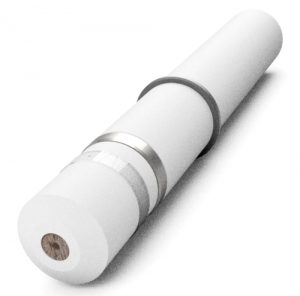
is the sum of Cl2, HOCl and OCl-. The sum is constant in the pH range. If a portable pH is present in the application, the compensation according to quality classes can be selected in column pH stabilization.
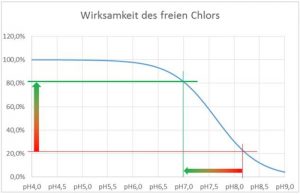
Total chlorine
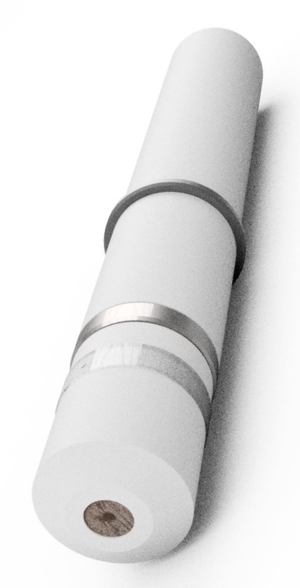
is the sum of free chlorine and combined chlorine. There are 3 main applications:
- Monitoring the concentration in the metering of monochloramines in drinking water,
- Monitoring of free chlorine when bound chlorine is not expected or the distribution is unimportant,
- To determine the quality of the water with the combined chlorine. Here, a second sensor for free chlorine to form the difference between the total and free chlorine is needed.
When forming the difference should be on similar properties (a) the sensors, the time behavior of the system (b) disinfection and of the sensors and the concentration ratio (c) be respected.
- The mating of sensor types CC and CP has similar properties.
- While the water cycle reacts very quickly to the dosage of free chlorine, the formation of bound chlorine is very slow. So, the sensor for Total chlorine reacts slower than the sensor for Free chlorine, because similar reactions in the electrochemical system of the sensor to proceed. It may therefore be, that the rapid display of Free chlorine indicating a higher concentration than the display of the Total chlorine. Since this is impractical, is the calculated negative difference absurd and can not be used.
- Reinforced this behavior, if the set points are for Free Chlorine and Combined chlorine and far apart. In Germany, in the pool there is a limit, free chlorine is 0.6 mg/l and bound chlorine is 0.2 mg/l, ie a ratio 1/3. If free chlorine, as is common in some countrys, increased to 6,0mg/l, then would 1/30 evaluate much more difficult.
Free chlorine and isocyanuric acid
The decay process of trichloroisocyanuric:

Trichloroisocyanuric in pictorial comparison:
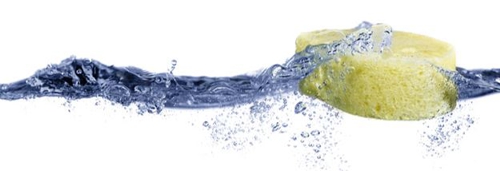
A photometer with two methods:
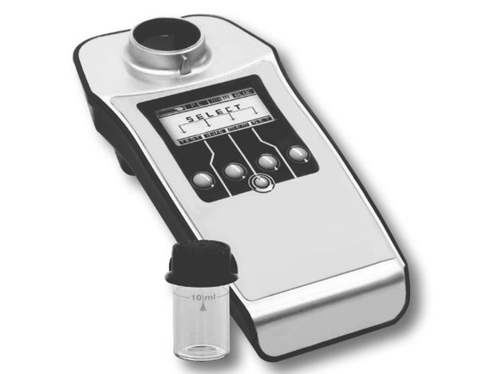
The controller with manual entry of the concentration of isocyanuric acid and based thereon calculating corresponding diagram:
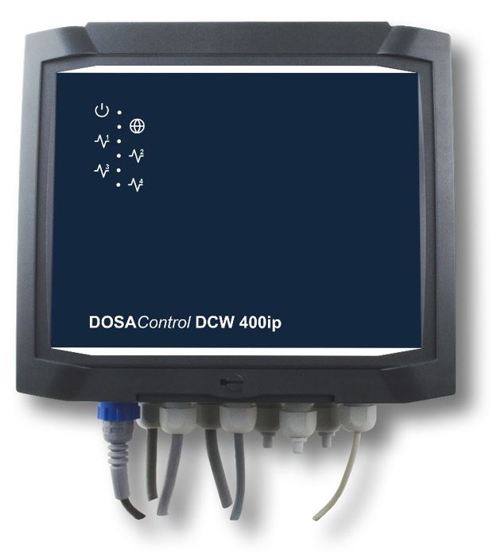
Example of a sensor:
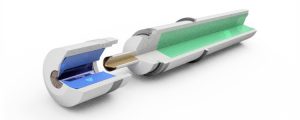
Trichlorisocyanuric acid (completed: chlorinated isocyanurates) is an organic chlorine product, that works as a depot for free chlorine. The advantage of using trichloroisocyanuric, a permanent (Re-) dosage be unnecessary, brings results with measurement errors and measurement errors.
Imagine a sponge, consisting of trichloroisocyanuric acid. The water decomposes (called hydrolysis) these sponge very slowly, there may be more than 30 take days.
The sponge disintegrates into hypochlorous acid, which acts as a disinfectant, and in excess isocyanuric.
While the hypochlorous acid is consumed as part of the free chlorine in the disinfecting, the isocyanuric remains intact and is more and more concentrated in water. The concentration of the isocyanuric acid is reduced only by exchange of water.
The membrane-covered amperometric sensor converts the sum of free chlorine and the chlorine fraction still bound to the isocyanuric acid into one signal. The term "suitable" denotes here, that the sensor is not damaged by the isocyanuric acid, or the measurement is disturbed.
Pay attention, it is wrong, that the reference measurement over DPD1 always indicates the free chlorine. In reality is the sum of free chlorine and the still bound to the isocyanuric chlorine content is displayed. To remedy this, a measurement of the concentration of free chlorine and isocyanuric acid must be carried out per.
The table below can calculate the actual content of free chlorine, but a conversion table is needed. Tables are available in the literature, for example, this:

In the controller, the following function is stored in place of the table. The manual interpolation is not necessary.
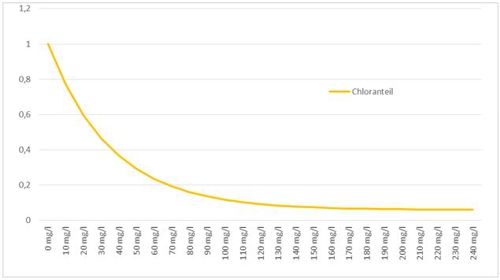
The absence of chlorine
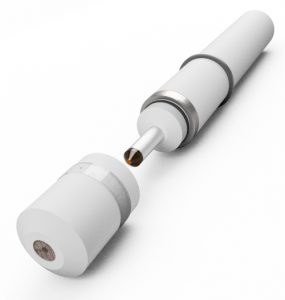
For detection, that no chlorine is present in the system, is only sensors of the subgroup "free absent" suitable. Other sensors age without disinfectant much faster. Here are the cross-sensitivity between individual sensors useful to rule out other disinfectants.
Measuring range
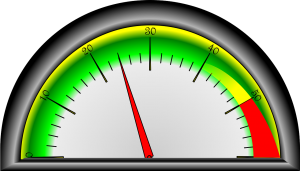
The measurement is an electrochemical system, subject to which different local conditions. For exact definition of the value should be in the form “20,0” be entered with a comma. The result “20” also includes “200” on. The entry of a range is not possible.
Measuring range minimum indicates, at which concentration the sensor is operated theoretically. The resolution of the signal in the controller forms the limit. It should be noted, that this area can be used in practice, although, the reference measurement provides no realistic results here. So Calibration must at (artificially) values increased from about 30% of the measurement range of the sensor be carried out .
Example 1: The setpoint for ozone should be 0.05mg/l. For a sensor with 0,005 to 2.0 mg/l, a calibration environment and start around 0.6 mg/l must be created. See Tutorial Calibration.
Measuring range maximum indicates, which area the sensor reaches under laboratory conditions. The nominal range is the under production conditions. That is why it is recommended, the measurement range approximately. 30% to choose above the expected maximum measured value.
Example 2: The setpoint for chlorine should be 1.8mg/l. For the sensor to 2.0mg/l compliance with the conditions on the ground can not be saved. The sensor must be selected with a larger measuring range.
Sensors with cleaning apparatus "have a heightened sensitivity. So here's a different maximum specified.
Example 3: The water from Example 2 is probably dirty. Therefore, a sensor of the type AS was elected with cleaning device. Without cleaning device is the maximum frequency of 20mg / l. With the cleaning device of the sensor is more sensitive and covers the range from 0.05mg/l to 7.0mg/l.
Measuring water
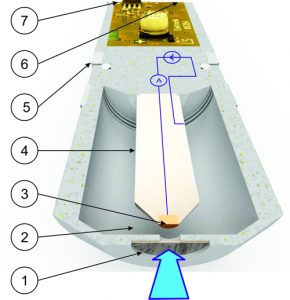
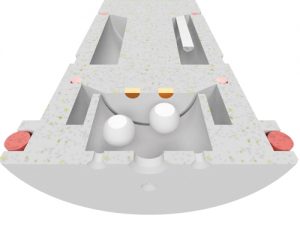
A nozzle of the flow-through chamber with 6mm diameter approximately 15 millimeters distance brings a constant jet of fluid (symbolized by a blue arrow) with the disinfectant in a direction plumb to the membrane (1).
The necessary optimum flow rate is indicated in the column in liters per hour. For sensors of the type AS with the optional cleaning device, an increased flow is required to the cleaning device. Details are Tutorial on the functioning of the cleaning device described.
Right is an example of a suitable flow-through chamber with monitoring the volume flow. The metallic float indicates the volume flow. Optionally, an inductive proximity switch can be used for detecting the position of the float (not shown).
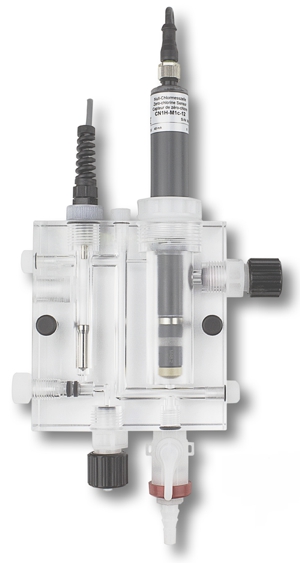
Pressure
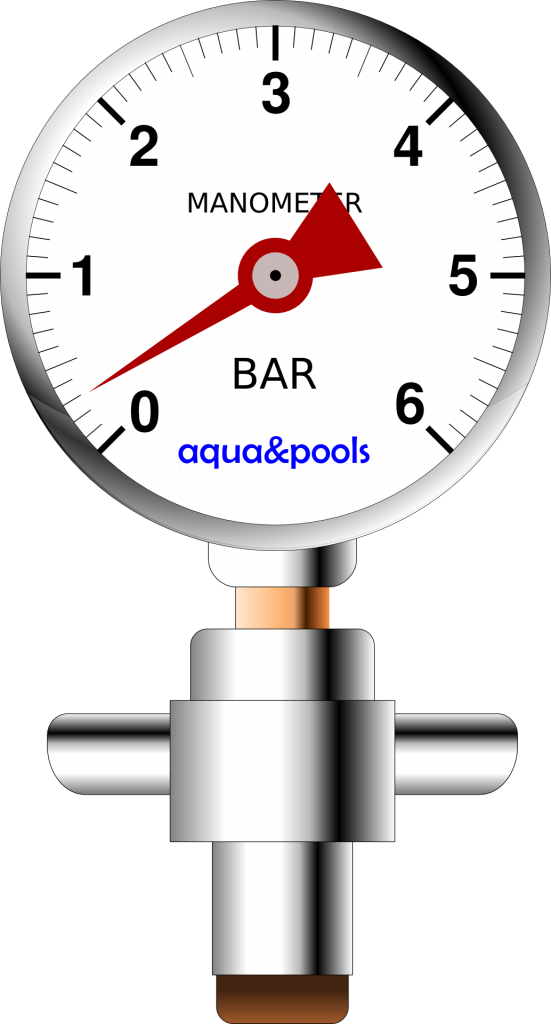
By changing the pressure in the vicinity of the sensor can lead to compression of the electrolyte space. The weakest point of this is the membrane. The sensors are checked to that in the table specified pressure in bar. Although it is recommended, not exploit this pressure and allow the measurement of water flow into a tank.
When using the sensor, please note, that the flow chamber itself is pressure-tight and then this sensor sufficiently fixed.
tab]
pH range
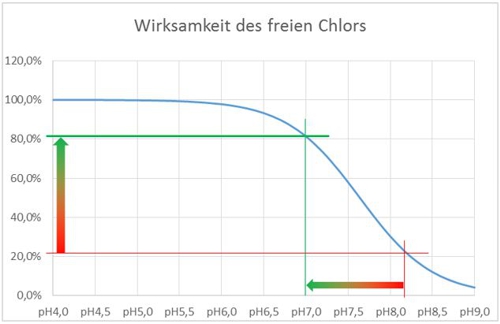
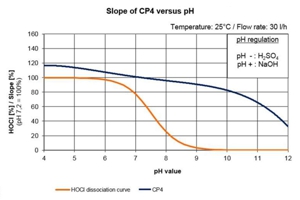
The function and the life of the sensor are tested in this pH range. Outside of the pH range, the life decreases. Outside the range, the sensor is highly likely to provide proportional signals for concentration.
In particular, the sensors for free chlorine, the electrolyte is strongly affected by pH extremes. The frequency of necessary change can rise.
For moving pH values the signal of the sensor changes within certain limits. Therefore, some sensors for pH-stable systems and other for systems with constant fluctuations in pH are suitable. The suitability was divided into grades. The meaning:
- 0: not until little pH-stable signal or measured variable is not pH-dependent,
- 1: medium pH stable signal,
- 2: very pH-stable signal,
The function curves of the signal change can be found in the data sheets. For transmitter manufacturers, the analytic functions are polynomial 4. class available. A signal correction based on the current pH is integrated in the controller DCW 400IP for the sensors of the brand DOSASens.
Temperature
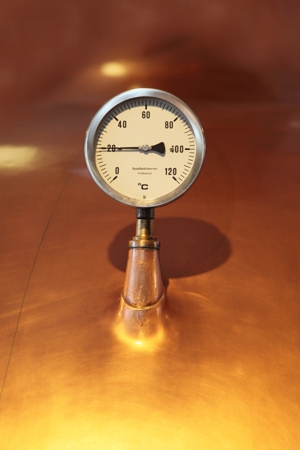
The temperature limit of the measurement is established by the material of the sensor. To correct the measured values, the sensors have an integrated temperature sensor. Its values are only used internally. In the typ with ModBus RTU connection the temperature value is provided too.
Sensors with membrane can be used up to 45 ° C. The standard for the material of the sensors is rigid PVC. Sensors without membrane can therefore be employed to 50 ° C. Sensors of the type AS from the material PEEK are available for temperatures up to 70 ° C.
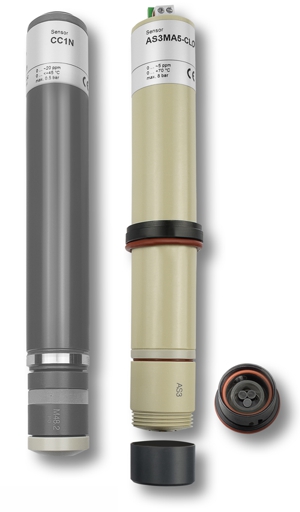
Cross sensitivities
Cross sensitivities to other disinfectants
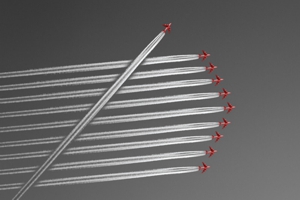
In principle, the sensors are designed to, to measure the sole disinfectant quantitatively. The sensor emits a signal proportional to the concentration of the disinfectant. If the disinfectant is NOT SINGLE substance, then the cross-sensitivity should be tested for the second disinfectant.
The values in the column in cross-sensitivities indicate, with which factor other disinfectants can be found in the signal.
Example: For a chlorine sensor 0 … 2,0mg/l is a factor of "1" for chlorine dioxide to find. The concentration of chlorine was 0.6 mg/l. Now, when 0.2 mg/l chlorine dioxide are also available, is the sensor with this 1×0,2mg/detect in its signal. The sensor is thus at an output 0 … -2000mV output a signal of -800mV. If the chlorine dioxide concentration always 1/3 be the concentration of chlorine, can via the calibration in the transmitter the relationship factor = -800mV / 0,6mg/l are prepared.
Surfactants
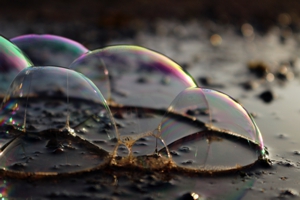
Surfactants are substances, which lower the surface tension of a liquid or the interfacial tension between two phases and allow the formation of dispersions or support or. act as solubilizers. The function of certain membranes is destroyed by surfactants. Thus, the sensors have a tolerance surfactants. Meaning:
- 0: no surfactants tolerance, can not be used with surfactants
- 1: surfactants limited tolerance, used with surfactants only after tests,
- 2: full surfactants tolerance, used with surfactants,
Seawater
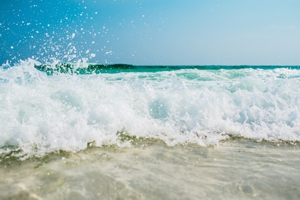
Due to its special composition, seawater reacts differently to disinfectants than drinking- or process water. For example, are included bromides, whose bond can break by the addition of disinfectants. The representations about the suitability of the sensors are not related to the function of the measurement in seawater. The information relates only to the durability of the sensor in the environment of this water.
- 0: No seawater tolerance, can not be used in sea water
- 1: limited seawater -Tolerance, used with sea water only after tests,
- 2: complete seawater -Tolerance, usable in seawater,
In addition, it must be noted, that although frequent reference method facing DPD method in seawater may incorrect results. See also the tutorial on calibration.
Reaction time
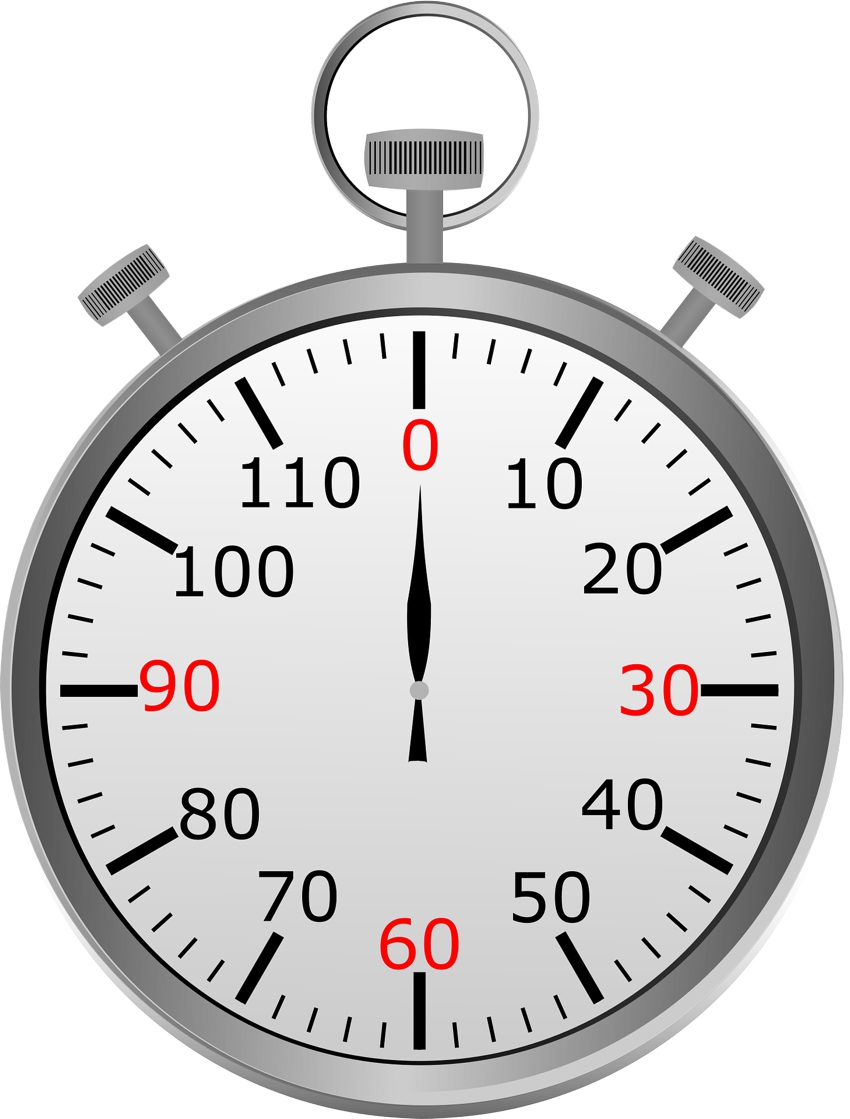
The value specified here displays, after how many seconds the signal 90% has accepted the theoretical signal.
This value applies to the already commissioned sensor. During initial startup, the time to signal is dependent on local conditions, in particular on the concentration of disinfectant in the water. The lower the concentration, the longer the waiting time. Pay attention, the belief in concentrations, which could arise from manual or systematic measurement errors in the reference measurement, does not reduce the initial time.
Example: Water should be disinfected with 0.05 mg l ozone. The process produces fluctuating concentrations. The manual DPD measurement gives 0.06 mg/l. For a sensor with a maximum range of 2.0mg/l should be used with 36 Hours waiting to be expected. It is better, to set a second circuit in a stable 1.0 mg/l and start the sensor therein, and to calibrate after about 1h.
Connections

Supply voltage
The electronics of the sensors must be supplied with an external voltage. The transmitter must provide this voltage available. Please check, whether the transmitter can provide a voltage in this range.
If the output signal of the sensor 4 … 20mA, then carried out the voltage supply via the current loop of the transmitter. So the transmitter must operate as an active receiver and represent more than 12VDC aviable..
When you connect multiple sensors in a transmitter, observe the specifications for the galvanic isolation of the sensors.
Output signal
The sensors work with the following output signals:
- 0 … -2000mV,
- 4 … 20mA,
- ModBus RTU,
When you connect multiple sensors in a transmitter, observe the specifications for the galvanic isolation of the sensors.
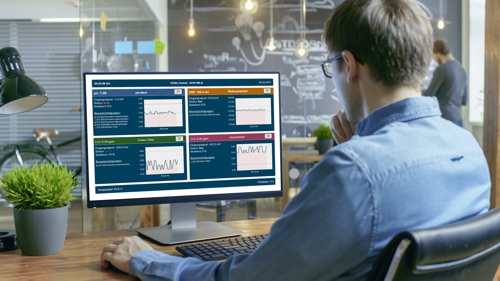
Connectable in controller DCW 400ip
As a preview for a tutorial on regulators is characterized in this column, which sensors 400IP can be connect to the controller DCW. This controller is modular and can be up to date on his 4 modules same and different sensors supply and evaluate.
Download Catalogs
German: |
[wpdm_package id=’1948′] |
English: |
[wpdm_package id=’1953′] |
Spanish: |
[wpdm_package id=’1955′] |
Download Data sheets
| Medium | Sensor-Type | German | English |
| Chlorine | CL4.2 | [wpdm_package id=’1961′] | [wpdm_package id=’1963′] |
| Chlorine | CC1 | [wpdm_package id=’1965′] | [wpdm_package id=’1967′] |
| Chlorine | CS4 | [wpdm_package id=’1969′] | [wpdm_package id=’1971′] |
| Chlorine | CP4 | [wpdm_package id=’1973′] | [wpdm_package id=’1975′] |
| Chlorine | CN1.1 | [wpdm_package id=’2036′] | [wpdm_package id=’2038′] |
| Chlorine / Chlorine dioxide | AS | [wpdm_package id=’1981′] | [wpdm_package id=’1983′] |
| Chlorine dioxide | CD4.2 | [wpdm_package id=’1985′] | [wpdm_package id=’1987′] |
| Chlorine dioxide | CD7 | [wpdm_package id=’1989′] | [wpdm_package id=’1991′] |
| Chlorine dioxide | CD10 | [wpdm_package id=’1993′] | [wpdm_package id=’1995′] |
| Bromine | BR1 | [wpdm_package id=’1977′] | [wpdm_package id=’1979′] |
| Ozone | OZ1.2 | [wpdm_package id=’1997′] | [wpdm_package id=’1999′] |
| Ozone | OZ7 | [wpdm_package id=’2001′] | [wpdm_package id=’2003′] |
| Ozone | OZ10 | [wpdm_package id=’2029′] | [wpdm_package id=’2031′] |
| chlorites | MST1 | [wpdm_package id=’2005′] | [wpdm_package id=’2007′] |
| Hydrogen peroxide | WP7 | [wpdm_package id=’2009′] | [wpdm_package id=’2011′] |
| Hydrogen peroxide | WP10 | [wpdm_package id=’2013′] | [wpdm_package id=’2015′] |
| Peracetic acid | PES7 | [wpdm_package id=’2017′] | [wpdm_package id=’2019′] |
| Peracetic acid | P9 | [wpdm_package id=’2021′] | [wpdm_package id=’2023′] |
| Peracetic acid | P10 | [wpdm_package id=’2025′] | [wpdm_package id=’2027′] |

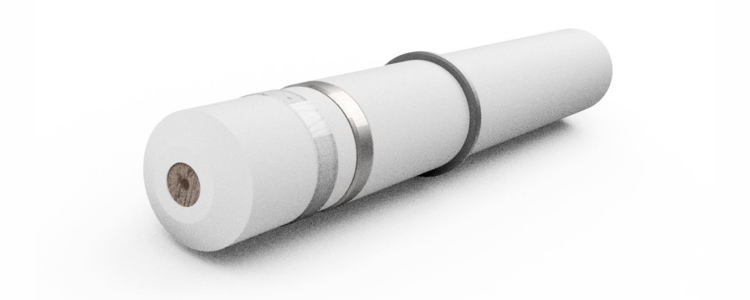
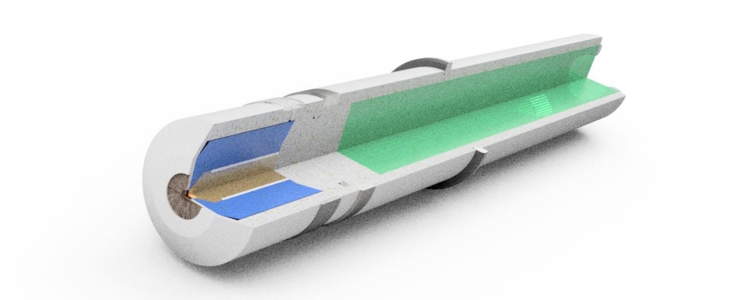
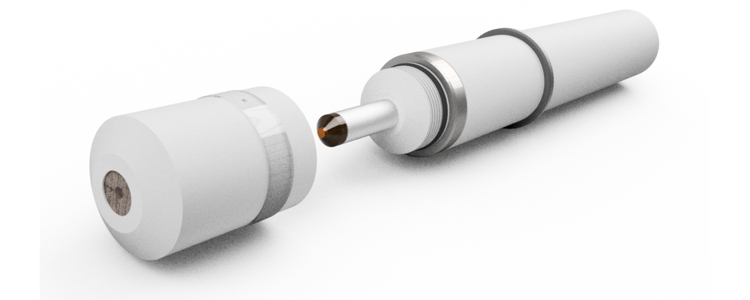
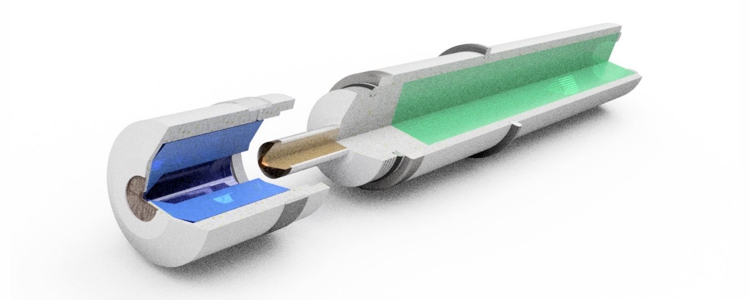
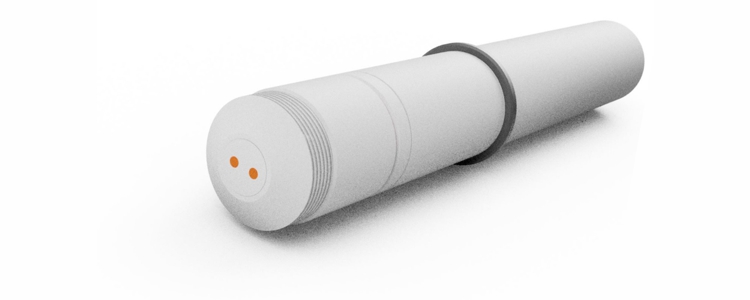
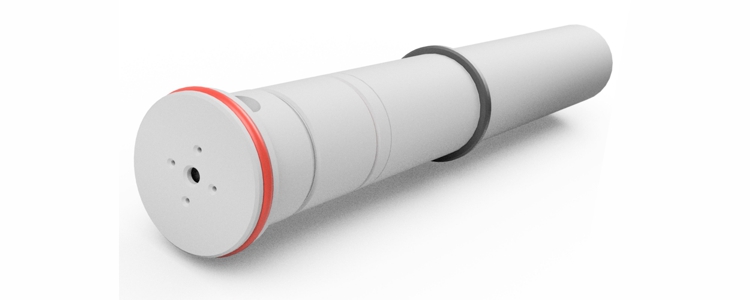
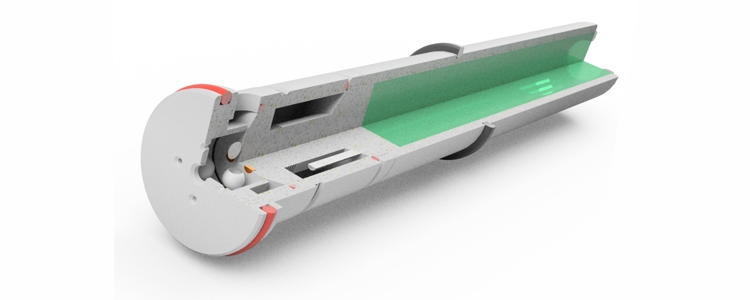
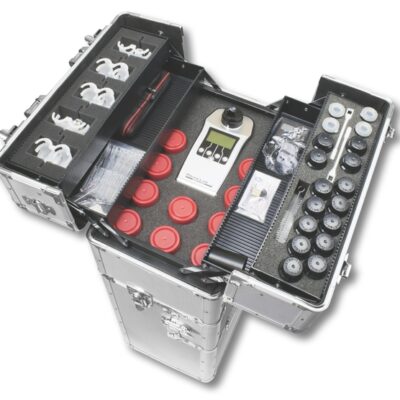
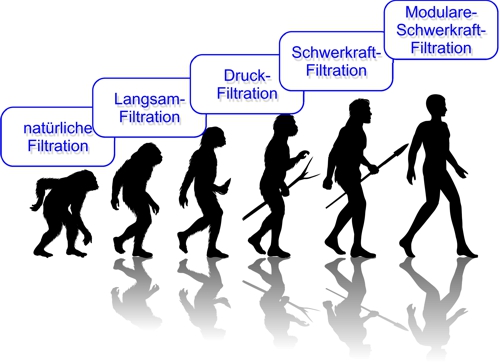
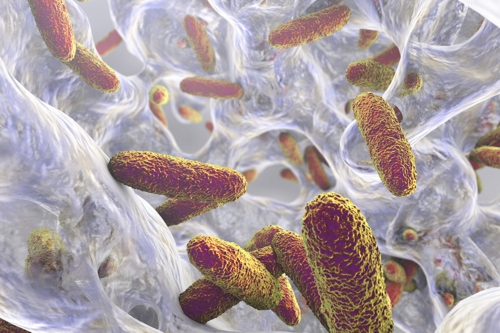
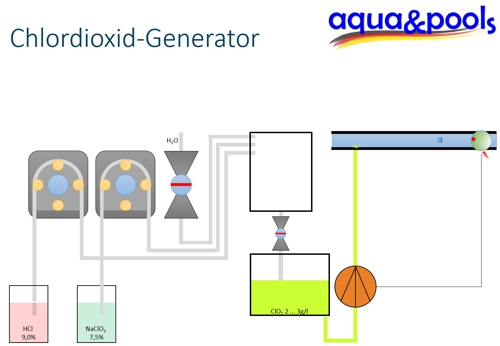
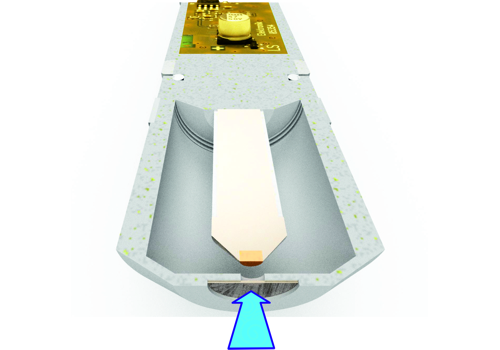

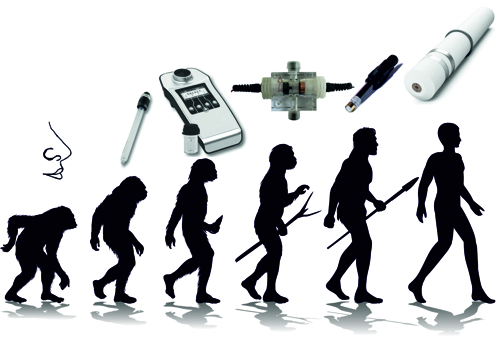
Leave a Reply
You must be logged in to post a comment.